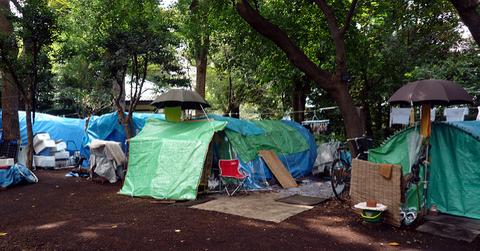Homeless Camps In Berkeley Are Now Powered With Solar Generation
Sam Clune, a former mortgage broker, took his skills from installing solar panels on an RV to creating systems for three different homeless camps around Berkeley. This provides consistent energy for dozens of people, who had to rely on coffee shops and libraries otherwise.
Updated May 28 2019, 5:19 p.m. ET
Solar energy has made it possible for those in developing countries to turn on lights and power devices at their convenience. They no longer have to rely on the limited resources they have, and it’s also reaped the same benefits for homeless people. Camps in Berkeley, California, have installed donated solar panels to provide easy access to power for those in need.
Back on November 4th, Bay Area Rapid Transit evicted numerous homeless people from their camp along Adeline Street. It’s another eviction in a long string of them between the city of Berkeley and the “First They Came for the Homeless” group. Most of them transferred over to Old City Hall while a smaller group established just north of the old one. A third camp is now located at the edge of Aquatic Park.
With aid from Sam Clune, a former mortgage broker, these homeless camps were hooked up with solar panels. Clune lost his recreational vehicle in late 2016 when the registration and smog test certifications were expired. He lost all of his belongings in the vehicle when it was towed away by police, and he’s been located at Aquatic Park since.
Prior to losing the RV, Clune was able to install solar panels on it. He was able to develop the skills needed to install more solar panels at the homeless camps in Berkeley. He also praised the benefits this power had over gas generators. The latter would break down consistently, made a lot of noise when in operation, and they weren’t safe for the environment.
A 915-watt system was first installed at Aquatic Park. Three solar panels are linked with four golf cart batteries. Extension cords branch out to the residents in their tents. Instead of needing to find a spot to charge devices or get some light, this new source provides consistent, reliable power.
“The big difference is not what you can do with electricity. It’s what you do not have to do,” Clune told The Mercury News. “Instead of sitting in a coffee shop for three hours a day charging stuff, building your whole day around it, we can now accomplish something else with our day.”
Clune notes that this frees up other public locations, like libraries, where numerous homeless people attempt to charge their phones and computers. Other solar panel systems have been installed at the other camps, although the one located at Old City Hall doesn’t receive as much sunlight. They’ve added more solar panels for further generation, but they can only fill about two golf cart batteries.
In all, the three camps combined have a capacity of 2,080 watts, which is enough for 40 people that inhabit these areas. Clune says that further energy will be pumped out in the summer when there’s more sunlight and they convert to 24 volts of power instead of 12 volts.

-1514321913021.jpg)